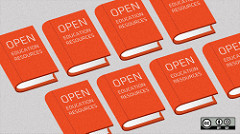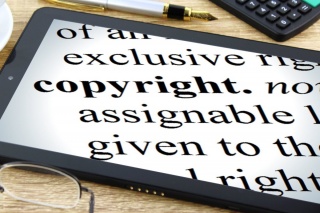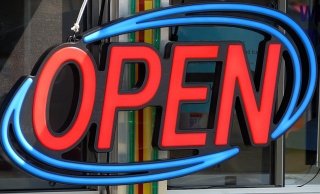Unit 3: Open Education, Copyright, and Open Licensing (LiDA103)

In Unit 3 we harness the potential of open education in pursuit of learning goals while adhering to the requirements of copyright in a digital world. Open Education, Copyright, and Open Licensing (LiDA103) is the third of four micro-courses for the Learning in a Digital Age course.
Completing this unit should take you approximately 30 hours (excluding time to prepare an optional assessment portfolio for formal credit).
Image credit: Is licensing really the most important question for OER? by Caroline Madigan for opensource.com, cc by sa 2.0.
On successful completion of this unit, you will be able to:
- develop and effectively apply knowledge of copyright, open licensing and license remix compatibility utilizing open education practices to support tertiary learning in a global digital context:
- define what constitutes an Open Educational Resource (OER) and discuss the value of OER in solving real-world problems and its implications for learning in a digital age;
- explain the scope, rights, protections, exceptions, and, transfer of copyright in a digital world;
- apply knowledge of copyright and the associated public domain within the context of global access to digital information and strategies to avoid breach of copyright in a digital world;
- describe the application of the components of the six Creative Commons licenses within the context of copyright law;
- explain the compatibility among different license types when remixing materials;
- apply knowledge of the legal remix compatibility of open licenses when determining permissible licenses for derivative works; and
- analyse a dimension of openness and identify its implications for learning in a digital age.
- develop and effectively apply knowledge of copyright, open licensing and license remix compatibility utilizing open education practices to support tertiary learning in a global digital context:
3.1: Why Open Matters

We begin this subunit by reflecting on why open matters for learning in a digital age. We consider the meaning of the freedom to learn and access to published research knowledge in a digital world. We explore the context for open education, copyright, and open licensing as it relates to learning.
The Universal Declaration of Human Rights commits to free education, at least in the elementary stages. Many do not extend the notion of “free education" to the college level, although the marginal cost of replicating digital content is near zero. In this subunit, we explore how open online initiatives can widen access to college-level education in affordable ways.
3.3: Copyright

This learning pathway focuses on your legal rights to make copies of copyrighted material. Since open licensing is based on copyright you need a clear understanding of how copyright works to use or create creative works that apply open licenses. Since online interactions and learning materials are published online, your exposure to risks associated with copyright breaches increase.
3.4: Copyright Case Study

In this section, we use a case study to investigate a practical example of how to apply copyright in a digital world. The case study links to authentic online resources you will need to consult, such as the respective terms of reference. The case study uses a multiple choice format which provides relevant feedback for the answers you choose.
You will need a solid working knowledge of copyright and how it functions internationally in a digital world. We recommend you review the subunit on copyright before attempting the case study.
LiDA103 Edubit Assessment
Assessment Competency: Develop and effectively apply knowledge of copyright, open licensing and license remix compatibility utilising open education practices to support tertiary learning in a global digital context.
Course Feed for Unit 3 (LiDA103)
The course feed harvests learner posts from selected Internet sites. You can post to the feed by logging in to the course resource site.



